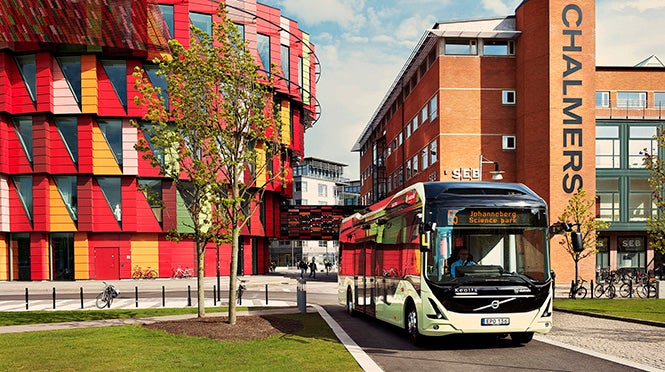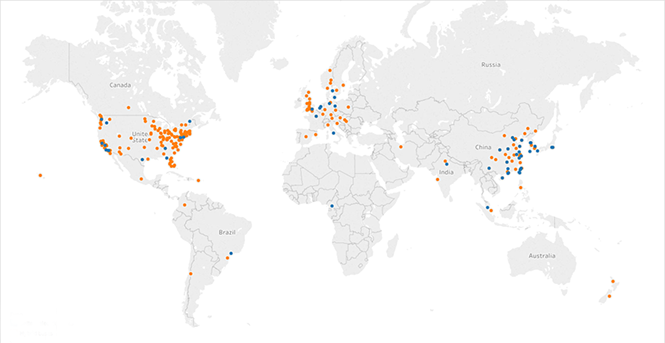
Hybrid and electric buses may be the future of public transport. But today, they are costlier than their diesel equivalents. Therefore, their implementation requires that private operators be subsidized, or that the higher costs for public operators be covered. For now there are more efficient alternatives for reducing GHG and local emissions.
The most significant emissions reduction will not come from the vehicles; it will come from people leaving their cars at home.
Let’s take the example of a Mexican commuter who chooses whether to ride a bus or drive to work each morning. If she drives, her commute will generate 8kg of CO2, vs. only 1.5kg when riding a diesel bus. By making the greener choice, she is saving up to 6.5kg of CO2. With a hybrid bus, that same ride would emit 1kg of CO2, and zero emission with an electric (assuming zero-emission grid)—translating into additional savings of 0.5kg and 1.5kg over a diesel bus, respectively. The extra savings are welcome, of course, but they pale in comparison to the emissions reduction generated by shifting from a private car to a public bus.
If we analyze a whole system instead of an individual, technology’s potential to reduce emissions gains importance, but is still lower than that of modal shift. That means we first need to focus on providing incentives for drivers to leave their cars behind and turn to public transit. When a bus system with exclusive lanes opens, for instance, 1%-5% of passengers are likely to be new riders who used to drive and made a conscious decision to switch. This proportion can increase to 10-15% with the right ancillary interventions, such as providing non-motorized transport infrastructure, improving accessibility and service quality.
Another great source of emission savings is a more efficient system. We have seen reductions of up to 30% in vehicle-kms after a system reorganization. The following graph compares the potential emission reductions of modal shift and fleet rationalization by shifting vehicles to hybrid (left column) or electric (right column) technology.

The bad news: hybrid and electric technologies may not be cost efficient yet due to battery prices
We compared the cost of hybrid and electric technologies vs. diesel over the entire life-cycle of a bus, and assumed:
- Acquisition costs: 60% higher for hybrid buses, and 100% for electric buses.
- Vehicle Operating Costs (VOC): fuel represents 40% of the total life-cycle costs of diesel buses. Lower consumption by hybrid and electric buses translates into savings of up to 15% in VOC for hybrids, and 40% for electric buses.
- Battery replacement: batteries typically need replacing after 6 to 8 years, while the lifespan of buses ranges from 10 to 12 years… meaning batteries need to be replaced at least once during the life-cycle of a bus. Battery replacement represents 15% of the purchase price of a hybrid bus, and 50% of the price of an electric bus.
The result? Subsidizing hybrid buses costs US$100-US$250 per ton of CO2 saved, and up to US$750 for electric buses… due in large part to the prohibitive cost of batteries.
The good news: the cost of batteries is plummeting.
The price of batteries would need to fall 26% to make emissions reductions cost-effective enough that they would justify public subsidies. To make hybrid buses commercially viable, the price would have to decrease by 45%. These figures are 75% and 90% respectively for electric buses.
Although we are still far from the 90% price reduction needed to make electric buses viable, a 45% reduction is just around the corner. In the last 10 years, battery prices have plummeted by up to 90%. Although this drop in prices has begun to slow down, projections indicate that we are most likely to achieve the required price reductions between 2020 and 2025.
Then shouldn’t we support the development of these new technologies? It depends on the context...
Supporting hybrid and electric technologies can boost industrial capacity and keep batteries prices falling. This is most likely to happen in places where mass transit is provided by public operators and national bus industry. Conversely, in fiscally constrained developing countries with private operators, pushing these technologies too early could harm both the public budget and the financial sustainability of transit systems.

Source: Xiangyi Li/WRI
Please tell me I´m wrong.
Most of the data in our models are from 2014 and older. With increasing frequency, we receive news that hybrid technologies are commercially viable. One of the reasons for writing this blog is to contribute to the ongoing dialogue. We will continue to research, update data, and improve models. In the meantime, nothing would make me happier than to receive new information, models or analysis so we can finally publish a post titled “New bus technologies are cost efficient.”
Please look at this technical note for references, assumptions, and methodology.


Join the Conversation